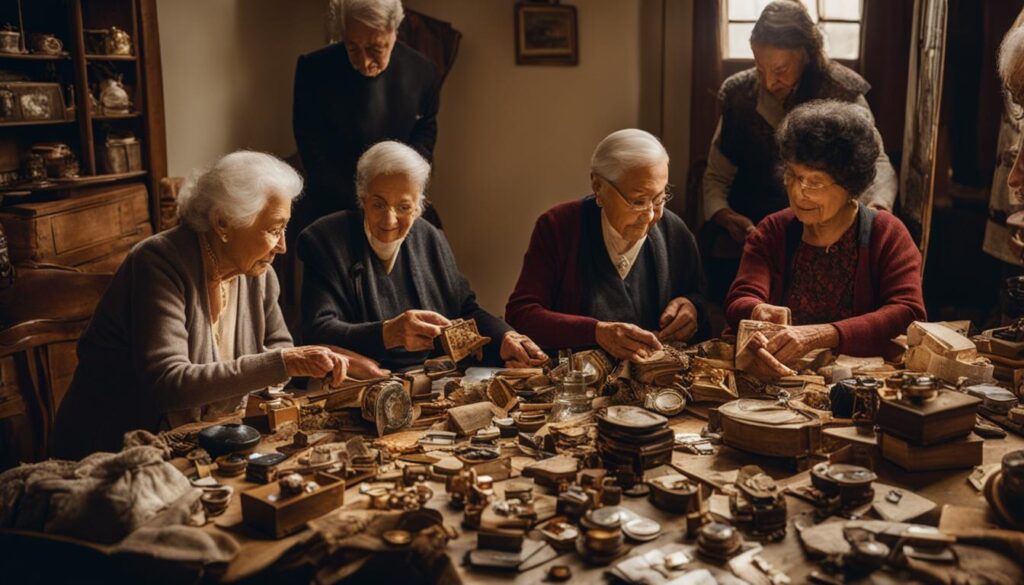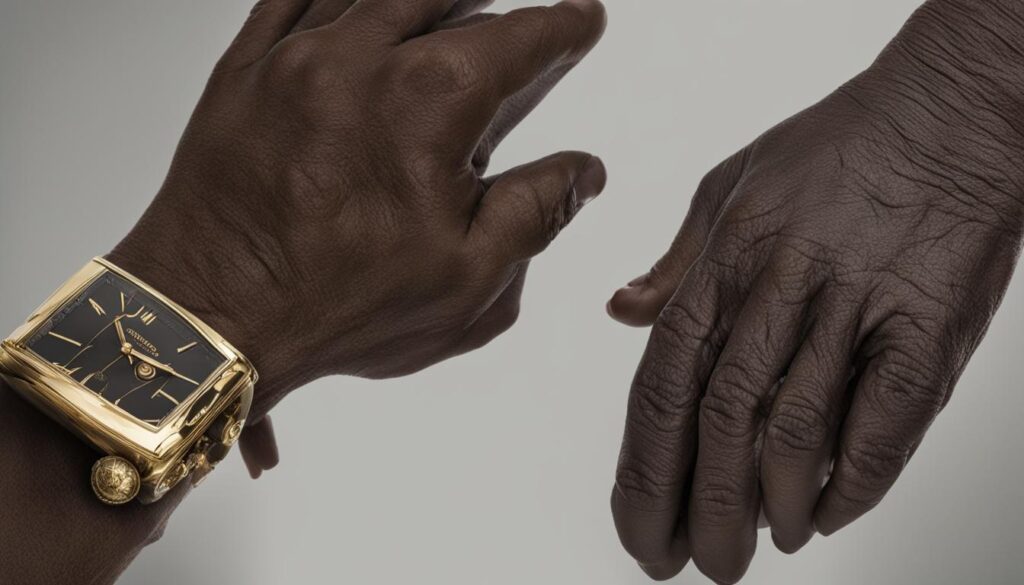As we enter our 70s, it becomes increasingly important to plan for our legacy and the preservation of our heirlooms. These cherished possessions hold sentimental value and connect us to our family history. By taking proactive steps to protect and pass down our legacy, we can ensure that future generations will continue to cherish and appreciate these meaningful items.
One effective approach to safeguarding family homes and heirlooms is through the use of the Heirloom Ownership Trust™ (HOT) offered by Borchers Trust Law. This specialized strategy provides protection, succession, and preservation for second homes, which are often the most valuable asset in one’s estate. The process begins with an “AUGUST” agreement that covers ownership allocation, property purpose, governance, usage, stewardship, and transfer restrictions.
Consulting with an elder law attorney can be beneficial, especially when parents show signs of deterioration or changes in mental ability during their retirement years. Their expertise can help guide you in making informed decisions and navigating the complex legal landscape of legacy planning.
Key Takeaways:
- Planning for your legacy and heirlooms in your 70s ensures their preservation for future generations.
- The Heirloom Ownership Trust™ (HOT) approach offers protection, succession, and preservation for family homes.
- An “AUGUST” agreement covers ownership allocation, property purpose, governance, usage, stewardship, and transfer restrictions.
- Consulting with an elder law attorney can provide valuable guidance during the planning process.
- Protecting your family legacy requires proactive steps and professional assistance.
Preserving Your Family Legacy through Family Trees and DNA Tests
Building a family tree is a meaningful way to preserve your family legacy. Using online family tree builders like findmypast.com, you can document all the members of your family in one place and share it with relatives. Ancestry DNA tests provide valuable insights into your family’s origins and can equip your family for the future. Combining genealogy records with personal family history and keeping them in scrapbooks or albums adds another layer of preservation.
Creating a family tree not only allows you to visually map out your family’s connections but also serves as a record of your ancestry. It can help future generations understand their heritage and identity, fostering a sense of belonging and continuity. Online family tree builders make it easier than ever to research and document your family history, allowing you to add photos, stories, and important details to each family member’s profile.
Ancestry DNA tests offer a deeper understanding of your family’s origins by analyzing your genetic makeup. By uncovering your ethnic background and potential connections to distant relatives, these tests can provide valuable insights into your heritage. This information can be passed down through generations and contribute to a greater understanding of your family’s unique identity.

Preserving Family Legacy through DNA Tests and Family Trees
Incorporating genealogy records with personal family history allows you to create a comprehensive record of your family’s legacy. By keeping these records in scrapbooks or albums, you can ensure they are preserved for future generations to explore and cherish. Adding personal notes, stories, and anecdotes to each entry brings the family history to life, making it more relatable and engaging.
| Benefits of Family Trees and DNA Tests | Family Tree Builders | Ancestry DNA Tests |
|---|---|---|
| Preserves family connections and relationships | Easily accessible online platforms | Provides insights into ethnic background and potential relatives |
| Documents family history and stories | Allows addition of photos, stories, and details | Can be passed down through generations |
| Enhances understanding of family heritage | Facilitates sharing with relatives | Contributes to a greater sense of identity |
“Preserving your family legacy through family trees and DNA tests provides a tangible way to connect with your ancestors and ensure their stories live on.” – Jane Smith, Genealogy Expert
Preserving your family legacy through family trees and DNA tests is a meaningful way to pass down your heritage and stories to future generations. By creating comprehensive family trees, documenting personal family history, and utilizing DNA tests, you can not only preserve your family connections but also gain a deeper understanding of your family’s origins. These valuable resources contribute to a lasting legacy that strengthens family bonds and fosters a sense of belonging.
Dividing Family Possessions as a Legacy
Dividing family possessions can be a source of struggle or a meaningful discussion, depending on existing relationships within the family. In order to preserve the family legacy, it is important to create a plan that focuses on relationships rather than ownership. By shifting the focus to the sentimental value and shared memories associated with the objects, elegant and creative solutions can be found. This approach allows siblings to share special items by creating rituals or traditions around them, promoting a sense of unity and connection.
Meaningful discussions play a key role in dividing family possessions as a legacy. When family members come together to openly and respectfully communicate their desires and feelings regarding specific items, it can foster a deeper understanding and appreciation for one another’s perspectives. It is important to listen actively and empathetically to each other’s stories and emotional attachments to the objects, as this can help facilitate a collaborative and inclusive decision-making process.
“Our family treasure chest represents our shared history and the values that have been passed down from generation to generation. We decided to create a rotating system, where each sibling gets to keep the treasure chest for a certain period of time. This way, we can all cherish and honor our family heritage while ensuring that everyone has the opportunity to create their own memories with it.”
Working together to find ways to pass down objects from the present and transform them into meaningful rituals can also be an effective way of preserving the family legacy. This can involve incorporating the objects into family traditions or creating new rituals that hold special meaning. For example, a family might pass down a quilt from generation to generation, with each person adding their own patch to symbolize their place within the family’s history.
By approaching the division of family possessions with empathy, open communication, and a focus on relationships, it is possible to ensure that the family legacy is preserved in a way that honors the shared history and values of all family members.

Creating Meaningful Rituals with Objects
Taking ordinary objects from the present and transforming them into meaningful rituals can be a powerful way of preserving family connections and creating a legacy. These rituals can serve as a bridge between past and present, honoring family traditions and maintaining a sense of continuity. By infusing objects with sentimental value and attaching special meaning to them, families can pass down their stories and values to future generations.
One example of creating a meaningful ritual is through the use of personal items like a tablecloth. Families can embroider the names of their loved ones onto the fabric, symbolizing the connections between generations. This tablecloth can then be used during family events, gathering multiple generations together and reinforcing the bond between family members. As new names are added over the years and older generations pass away, the tablecloth becomes a tangible symbol of family history and a source of comfort and connection.
Another way to create meaningful rituals is by repurposing objects that hold significance to the family. For instance, if there is a family heirloom that has been passed down through generations, it can be used in a special ceremony or displayed prominently in a designated area of the home. This not only preserves the object itself but also keeps the memories and stories associated with it alive. By actively engaging with these objects and incorporating them into family traditions, families can strengthen their sense of identity and create lasting connections.

Examples of Creating Meaningful Rituals
- Creating a memory jar where family members can write down their favorite memories and add them to the jar during special occasions.
- Designating a specific recipe to be cooked and shared during family gatherings, symbolizing the continuation of culinary traditions.
- Planting a tree in a beloved family member’s honor and having future generations care for it, representing the growth and resilience of the family.
Through these rituals, objects gain new life and become powerful symbols of family connections. They provide a tangible link to the past and serve as a reminder of the values and traditions that bind the family together. By consciously creating meaningful rituals with objects, families can preserve their legacy and ensure that their stories are passed down for generations to come.
The Importance of Good Relationships in Legacy Preservation
Preserving your family legacy is not only about tangible assets and heirlooms; it also involves passing on traditions, values, and memories from one generation to another. Good relationships among family members play a significant role in how the family legacy is preserved and cherished. When siblings have a positive relationship, they can work together to find creative and elegant solutions for sharing special items and ensuring the continuity of family traditions.
Instead of focusing solely on ownership and material possessions, preserving family legacy through good relationships involves meaningful discussions and collaborative decision-making. It requires open communication and empathy to understand each family member’s unique connection to certain objects or traditions. By putting relationships first, families can find ways to honor the past, celebrate the present, and create a meaningful future for generations to come.
“The love and respect we have for one another are the greatest legacies we can pass on to future generations.” – Unknown
The Power of Shared Memories
In addition to fostering good relationships, preserving family legacy also involves creating and preserving shared memories. These memories can be created through traditions, rituals, and experiences that bring family members together. By establishing meaningful rituals and passing them on to younger generations, families can ensure that the stories and values behind these traditions are passed down and cherished.
For example, a family might have a tradition of gathering around a certain tablecloth for special occasions. Each time the family comes together, they can share stories, memories, and laughter while using the same tablecloth. This simple act not only preserves the physical object but also strengthens the emotional bond among family members. It becomes a symbol of unity, love, and shared history.
| Benefits of Good Relationships in Legacy Preservation | Challenges without Good Relationships |
|---|---|
|
|
Ultimately, the importance of good relationships in legacy preservation lies in the fact that they not only preserve family heirlooms and traditions but also foster a sense of belonging, connection, and love within the family. By prioritizing relationships and passing on these values to future generations, families can ensure that their legacy lives on for years to come.
Seeking Professional Assistance for Legacy Planning
Estate planning is a crucial step in ensuring that your legacy is preserved according to your intentions. It involves making decisions about the allocation of assets, protecting your valuable heirlooms, and ensuring that your wishes are carried out effectively. While it may seem overwhelming, seeking professional assistance can provide valuable guidance and expertise in navigating the complex legal processes involved.
An estate planning attorney or a senior move manager can help you create a comprehensive plan that addresses all aspects of legacy preservation. They can assist in drafting wills, establishing trusts, and developing strategies for preserving family heirlooms and personal legacies. These professionals have a deep understanding of the legal requirements and can ensure that your documents are legally valid and enforceable.
Collaborating with professionals also offers peace of mind, knowing that your legacy is in capable hands. They can help you make informed decisions based on your unique situation and assist in resolving any potential conflicts or challenges that may arise. With their expertise, you can be confident that your legacy will be preserved and passed on to future generations.
The Benefits of Professional Assistance
There are several benefits to seeking professional assistance for legacy planning. Firstly, professionals can provide an objective viewpoint and guide you through the process, ensuring that all necessary legal steps are taken. They can help you navigate complex tax laws, minimize estate taxes, and optimize the distribution of assets.
Furthermore, professionals can offer strategies and tools for preserving family heirlooms. They understand the sentimental value attached to these possessions and can help you find ways to pass them down to future generations while ensuring their protection and proper management.
Lastly, collaborating with professionals allows you to focus on what matters most – spending quality time with your loved ones. By entrusting the legal and logistical aspects of legacy planning to professionals, you can create cherished memories with your family, knowing that your legacy is in good hands.
Conclusion
Planning for your legacy and heirlooms in your 70s is essential for preserving family connections and ensuring a meaningful inheritance for future generations. By creating a comprehensive plan that covers ownership, purpose, governance, usage, stewardship, and transfer of family homes, you can protect your valuable assets and ensure they remain within the family.
Engaging in meaningful discussions with family members is also crucial. Sharing stories and creating rituals around family possessions can strengthen the bonds between generations and contribute to a lasting legacy. These traditions and values can be passed down to future family members, creating a sense of continuity and connection.
Seeking professional assistance, such as an estate planning attorney or a senior move manager, can provide valuable guidance and expertise in legacy planning. These professionals can help navigate complex legal processes and ensure that your wishes are carried out effectively. They can also offer strategies and tools for preserving family heirlooms and personal legacies, providing peace of mind for you and your loved ones.
Preserving your family connections, traditions, and memories through careful planning and meaningful discussions ensures that your legacy and heirlooms are not only valuable assets but also cherished symbols of your family’s history. By taking the time to plan for the future and engage with your family members, you can create a lasting legacy that will be treasured for generations to come.
FAQ
What is the Heirloom Ownership Trust™ (HOT) approach offered by Borchers Trust Law?
The Heirloom Ownership Trust™ (HOT) approach provided by Borchers Trust Law offers protection, succession, and preservation for family homes through an “AUGUST” agreement that covers ownership allocation, property purpose, governance, usage, stewardship, and transfer restrictions.
How can I preserve my family legacy through family trees and DNA tests?
You can document your family members in one place and share it with relatives using online family tree builders like findmypast.com. Ancestry DNA tests offer valuable insights into your family’s origins and can equip your family for the future.
How can I divide family possessions as a legacy?
Creating a plan that focuses on relationships rather than ownership can lead to elegant and creative solutions. Siblings can share special items by creating rituals or traditions around them, or finding ways to pass down objects from the present and transform them into meaningful rituals.
How can I create meaningful rituals with objects to preserve family connections?
Taking ordinary objects from the present and transforming them into meaningful rituals can be a powerful way of preserving family connections. For example, embroidering names on a tablecloth used during family events can symbolize past and present connections.
What is the importance of good relationships in legacy preservation?
Good relationships among family members play a significant role in how family possessions are divided and how the family legacy is preserved. When siblings have a positive relationship, they can work together to find creative and elegant solutions for sharing special items and passing on traditions and values to future generations.
Why should I seek professional assistance for legacy planning?
Seeking professional assistance, such as an estate planning attorney or senior move manager, can provide valuable guidance and expertise in legacy planning. These professionals can help navigate complex legal processes, offer strategies for preserving family heirlooms, and ensure that your wishes are carried out effectively.
How does planning for my legacy and heirlooms in my 70s benefit my family?
Planning for your legacy and heirlooms in your 70s ensures that your family connections, traditions, and memories are preserved for future generations. By creating a comprehensive plan that addresses ownership, purpose, governance, usage, stewardship, and transfer of family homes, you can protect your valuable assets and ensure they remain in the family.


Pingback: Preserving Your Historical Legacy and Stories in Your 70s – Straight Fire Money